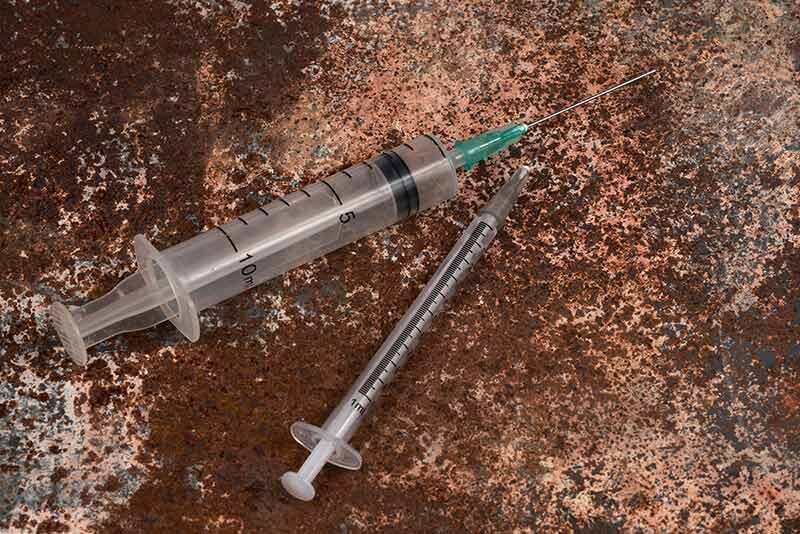BLOG
How To Safely Manage Sharps And Needles During Biohazard Cleanup
How To Safely Manage Sharps And Needles During Biohazard Cleanup
When it comes to biohazard cleanup, managing sharps and needles is a task that requires utmost caution and adherence to safety protocols. Sharps – a medical term for devices with sharp points or edges that can puncture or cut skin – are potentially hazardous and need to be handled with care to prevent injury and the spread of infection.
Understanding The Risks
Before delving into the methods of managing sharps and needles, it’s essential to understand the risks involved. Sharps can carry blood-borne pathogens such as Hepatitis B, Hepatitis C and HIV, which can be transmitted through accidental pricks or cuts. This makes it imperative for cleanup crews to follow stringent procedures to prevent accidental needle stick injuries and the spread of diseases.
Safety First: Personal Protective Equipment (PPE)
The first line of defence in managing sharps and needles during biohazard cleanup is personal protective equipment (PPE). Those cleaning and handling sharps should wear appropriate PPE, including puncture-resistant gloves, eye protection, face masks and fluid-resistant clothing. This necessary equipment forms a protective barrier between the individual and the hazardous materials they are handling.
Proper Handling Techniques
When managing sharps and needles, never attempt to pick them up with your hands, even if you’re wearing gloves. Instead, use tools like tongs, forceps, or a brush and dustpan to pick up sharps. Be sure to always keep the sharp end facing away from you and others as you place it into an appropriate sharps container.
Utilising Sharps Containers
A key element in managing sharps and needles is the use of sharps disposal containers. These containers are designed to be puncture-resistant for safe handling and should be labelled clearly to avoid any confusion with regular waste bins. They should be accessible at the point of cleanup and remain closed when not actively in use.
Safe Disposal Practices
Once collected, sharps and needles should not be disposed of in regular trash bins. The filled sharps containers must be handled according to local regulations, which often require transport to a biohazard waste facility for proper disposal. It’s critical to follow these regulations to the letter to avoid environmental contamination and legal repercussions.
Training And Awareness
Effective management of sharps and needles during biohazard cleanup also hinges on comprehensive training. Cleanup crews should be well-versed in the identification of different types of sharps, the potential risks associated with them and the correct protocols for handling and disposal. Regular training sessions can ensure that all team members are updated on the best practices and any changes in regulations.
Incident Response Plan
Despite all precautions, accidents can happen. An incident response plan should be in place that outlines the steps to be taken if someone is accidentally injured by a sharp or needle. This includes immediate first aid, reporting the incident and seeking medical attention.
Regular Audits And Compliance Checks
Biohazard cleanup operations should include regular audits and compliance checks to ensure that the procedures for managing sharps and needles are being followed. These checks can help identify any gaps in the safety protocol and provide an opportunity for corrective action before any incidents occur.
Community And Environmental Responsibility
Managing sharps and needles during biohazard cleanup isn’t just about the safety of the cleanup crew, it’s also about community health and environmental stewardship. Proper disposal protects waste handlers, landfill workers and the general public. It also prevents pollutants from entering the soil and water, thereby safeguarding the ecosystem.
Professional Sharps Removal
Managing sharps and needles is a critical component of biohazard cleanup that must be approached with care and precision. Unlike the general public and ordinary cleaners, professional biohazard cleanup crews are equipped with the proper knowledge, tools and safety protocols to significantly minimise risks associated with handling sharps.
Therefore, in order to ensure a safe and compliant cleanup operation, biohazard sharps removal from places like public toilets, abandoned houses, gardens, bushland, hotels, parks, playing fields and workplaces is a task best left to professionals such as National Trauma (NTCSC). With over 30 years’ experience in cleaning and disposing of biohazardous materials such as sharps and needles, you can rest assured that affected locations will be effectively remediated and left safe once again for the community at large.
Speak to the team at NTCSC anytime day or night 24/7 about your sharps cleaning and disposal needs – we’re here and ready to help.
